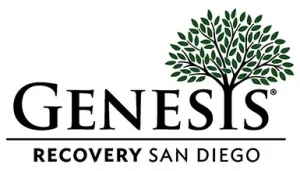According to the Centers for Disease Control and Prevention (CDC), there were over 70,000 drug overdose deaths in America in 2017. 47,000 were from opioids and 36% of those were from prescription opioids. Most of these prescription pain medication overdose deaths were a result of drugs like fentanyl, codeine, Vicodin, and Oxycontin; all of which are produced by a pharmaceutical company called Purdue Pharma.
These numbers are troubling enough by themselves but prescription opioids have further reaching effects. Painkillers like the ones listed above are extremely addictive and eventually, the prescriptions run out. Patients are left with an addiction that they can no longer feed. Enter heroin. The story of people getting an injury, getting prescribed opiate pain meds, getting addicted, running out, and getting turned on to cheaper and more potent heroin is a story that I have heard over and over again. Not only that but so much heroin is also cut with fentanyl these days. Fentanyl is also turning up in counterfeit prescription opioids and other drugs like cocaine and even marijuana. A large amount of this fentanyl is now being produced in and imported from other countries but it started with the pharmaceutical companies.
The most tragic thing about the opioid epidemic is that this snowball effect was started by the deceptive and aggressive marketing of prescription pain medication on the part of pharma companies, most notably OxyContin by Purdue. Headquartered in Stamford, Connecticut, Purdue has been around since 1892. According to the website “Purdue is a leader in developing prescription opioids.” and “For decades, we have been a pioneer in medications for reducing pain, a principal cause of human suffering.” The Oxy in OxyContin refers to oxycodone, the opioid drug itself. Contin is a controlled release system that Purdue developed in 1972. OxyContin was made available to the public in 1996. The drug was marketed as having a low risk of addiction because of the extended release feature. Instead of having to take oxycodone pills frequently throughout the day, patients only had to take OxyContin every 12 hours.
During the 1990s there was a push within the health care industry for more effective and proactive pain treatment and Purdue capitalized on that with OxyContin. The company’s promotion of the drug was unprecedented. By the year 2000 Purdue had doubled their number of sales reps and these reps earned huge yearly bonuses. In 2001, $200 million was spent on marketing OxyContin. During a five-year span from the drug’s introduction in 1996 to 2001 Purdue held over forty national pain management conferences in different cities across the country. These were all-expenses-paid events at upscale resorts for doctors, nurses, and pharmacists that were designed to influence their prescribing of OxyContin. Purdue even compiled a huge nationwide database that identified doctors who prescribed pain medication so that sales reps could target them for increasing sales.
While Purdue was hyping up the wonders of their new drug, they were downplaying its potential for abuse. The company put out videos, brochures, and audio tapes featuring doctors saying that OxyContin was not dangerous or addictive. Sales reps were trained to tell prescribing doctors the same thing. Purdue even funded non-profit organizations like the American Academy of Pain Management and the American Pain Society that published materials encouraging the prescription of opioids.
Investigations into Purdue have shown that for years, the company had knowledge of suspicious prescribing practices of individual doctors yet did not report them to the authorities. These doctors were put on a list that Purdue started in 2002 called “Region Zero”. By 2013 there were over 1,800 doctors on the list but only 8% had been reported. Purdue routinely ignored letters and emails from concerned sales reps and sales managers about suspicious activity related to OxyContin orders and prescriptions. Eventually, it became clear that Purdue knew what was going on. In 2007, three of the company’s executives admitted to misleading doctors, patients, and the FDA about the addiction potential of the drug and plead guilty to federal charges. Purdue was ordered to pay over $600 million in fines.
There’s a clear line of causality leading from Purdue to the current state of the opioid epidemic. The false and misleading marketing of OxyContin claimed that the time-release feature of the drug made it safe with a low risk of abuse but the coating on the pills was easy to scrape off and the pills could then be crushed, snorted, smoked, or injected. Doctors overprescribed the drug. Some crooked ones even ordered large quantities and would then sell them in bulk to dealers. A huge black market sprang up for OxyContin. I remember buying the 80 mg pills in the early 2000s and they would go for $40 to $80 a pill. People became addicted through their prescriptions or would sell them to others and that got more people addicted. In 2010, Purdue discontinued the old pills and started producing tamper resistant ones. People could no longer get high off of them like they used to. Enterprising Mexican drug cartels saw the opportunity and began flooding the streets with cheap, potent heroin. Addicts who could no longer get or afford prescription OxyContin and other opioids now had a viable alternative in great supply. Heroin had always been available but never on the scale that it is now.
Currently, Purdue and a few other companies are facing hundreds of lawsuits. Individuals, cities, and almost half of the states in the nation are accusing them of being a major cause of the opioid epidemic through misleading doctors, the public, and the government. Some legal experts think that many of the cases will be thrown out because of technicalities. Others say that there is more than enough evidence of wrongdoing for the plaintiffs to win. Purdue is trying to shift the blame onto government agencies and distributors. They’re claiming that the statute of limitations is up in many of the cases and that the opioid epidemic was caused by many factors. Several attorneys general from different states are in talks with Purdue and other companies in an attempt to settle the cases out of court but at the same time claim, they are fully prepared for a legal battle. However it all shakes out, 2019 is shaping up to be a tough year for Purdue and its compatriots. There is the potential for hundreds of millions or even billions of dollars worth of fines that could be levied against them.
Despite all our advances in modern medicine, we still don’t have a surefire, 100% reliable way to treat pain. There is no cure for pain. Narcotics can do a great job in taking it away for a while but their efficacy fades over time. Addiction is an obvious downside. There are alternative ways to work on different kinds of pain like non-narcotic medications, physical therapy, massage, and acupuncture but those are not guaranteed to work (not to mention most health insurance policies will not cover those while they will almost always cover narcotic pain medicine). Chronic pain can be crippling and all-consuming when it makes it difficult to go about daily life. Patients want something to make it all go away and I think most doctors genuinely want to help. For honest doctors, the decision on when and how to prescribe opioid painkillers can’t always be an easy one.
Purdue is a private company owned by the Sackler family. At one point the company had been advertising itself as fighting a nationwide pain epidemic through its drugs. It is tragic that in pretending to fight a made-up epidemic, Purdue created a very real one. One family has, directly and indirectly, destroyed thousands of other families and cost the country billions and billions of dollars.
The company now advertises how they’ve changed their advertising. The Purdue-funded nonprofit American Academy of Pain Management is now the Academy of Integrative Pain Management and they “are a diverse community of healthcare providers representing more than 30 distinct disciplines who are dedicated to using all appropriate therapeutic approaches to reduce pain …”. Purdue manufactures buprenorphine, a drug used to treat opiate addiction and last year pledged millions of dollars to a nonprofit to develop a cheaper version of it. I find that morbidly hilarious. Now Purdue is cashing in on the backside of the opioid epidemic, helping to treat what they caused. Name changes, publicity stunts, and fake altruism are not enough to keep the public from seeing the truth. Hopefully, the lawsuits against Purdue will be successful and all the money from the fines can be put towards helping to mitigate the nationwide disaster that the company helped create.

